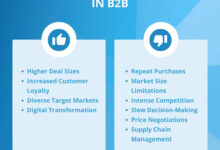B2B Mastery: 7 Powerful Strategies to Skyrocket Your Sales
Ever wonder how companies sell to other companies? Welcome to the world of B2B—where relationships, strategy, and long-term value rule the game.
What Exactly Is B2B? Breaking Down the Basics

Business-to-business, or B2B, refers to transactions between companies rather than between a company and individual consumers (which is B2C). This model powers industries from manufacturing to software, where one business provides products or services to another to help them operate, grow, or serve their own customers.
Defining B2B in Modern Commerce
B2B is not just about selling—it’s about solving problems at scale. Unlike B2C, where emotional appeal often drives decisions, B2B transactions are typically based on logic, ROI, and long-term partnerships. For example, a cloud computing provider like Amazon Web Services sells infrastructure to other tech companies, enabling them to scale without building physical data centers.
- Transactions occur between businesses, not individuals.
- Decision-making is often complex and involves multiple stakeholders.
- Sales cycles are longer but yield higher lifetime value.
B2B vs. B2C: Key Differences You Need to Know
While both models involve selling, the approach, messaging, and customer journey differ drastically. In B2C, a customer might buy a pair of shoes on impulse after seeing an Instagram ad. In B2B, a purchasing decision for enterprise software could take months, involve RFPs (Request for Proposals), demos, legal reviews, and executive approvals.
- B2B:理性, multi-step, relationship-driven.
- B2C: Emotional, quick, convenience-focused.
- B2B customers expect detailed data, case studies, and ROI projections.
“B2B is not just business. It’s about building trust, delivering value, and creating partnerships that last.” — Michael Dell, Founder of Dell Technologies
The Evolution of B2B: From Fax Machines to Digital Marketplaces
The B2B landscape has undergone a radical transformation over the past few decades. What once relied on phone calls, trade shows, and paper catalogs now thrives on digital platforms, AI-driven insights, and data analytics.
Historical Shifts in B2B Commerce
In the 1980s and 1990s, B2B sales were largely relationship-based. Sales reps built trust through face-to-face meetings and long-term networking. The rise of the internet in the 2000s introduced e-procurement systems and early digital catalogs. Companies like ThomasNet began connecting buyers and suppliers online, streamlining sourcing.
- Fax machines and phone calls dominated early B2B communication.
- ERP systems like SAP and Oracle automated internal operations.
- E-commerce platforms started replacing paper-based ordering.
The Digital Revolution and B2B E-Commerce
Today, over 70% of B2B buyers prefer to research and purchase online, according to a McKinsey report. Platforms like Alibaba, Amazon Business, and specialized industry marketplaces have made it easier than ever for businesses to find suppliers, compare prices, and place orders—all without human interaction.
- B2B e-commerce sales in the U.S. are projected to reach $2.1 trillion by 2024 (Statista).
- Self-service portals and AI chatbots enhance buyer autonomy.
- Mobile access allows procurement managers to order from anywhere.
Key Players in the B2B Ecosystem
Understanding who’s involved in B2B transactions is crucial for crafting effective strategies. Unlike B2C, where the buyer is usually one person, B2B decisions often involve a committee of stakeholders.
Types of B2B Companies
B2B businesses come in various forms, each serving a unique role in the supply chain. These include:
- Manufacturers: Produce goods sold to wholesalers or other manufacturers (e.g., Intel selling chips to Dell).
- Wholesalers & Distributors: Buy in bulk and resell to retailers or smaller businesses (e.g., Sysco supplying restaurants).
- Service Providers: Offer expertise like consulting, logistics, or SaaS (e.g., Salesforce, Deloitte).
The Decision-Making Unit (DMU) in B2B
In B2B, the buying process involves a Decision-Making Unit—a group of individuals who influence or approve purchases. This can include:
- Users: The team that will use the product (e.g., marketing team using a CRM).
- Influencers: IT or finance departments that evaluate technical or financial feasibility.
- Decision Makers: Executives or procurement officers with final approval power.
Understanding the DMU helps tailor messaging to each stakeholder’s pain points and priorities.
B2B Marketing: Strategies That Actually Work
Marketing in the B2B space isn’t about flashy ads or viral trends. It’s about positioning your brand as a trusted advisor and solution provider. Success comes from consistency, credibility, and content that educates.
Content Marketing for B2B Audiences
High-quality content is the backbone of B2B marketing. Decision-makers seek in-depth information before committing. Whitepapers, case studies, webinars, and industry reports build authority and nurture leads.
- Create content that addresses specific pain points (e.g., “How to Reduce Cloud Costs by 40%”).
- Use gated content to capture leads (e.g., download a report in exchange for an email).
- Publish on platforms like LinkedIn and industry-specific forums.
For example, HubSpot’s blog generates millions of visits monthly by offering actionable marketing advice, positioning them as thought leaders.
Account-Based Marketing (ABM)
ABM flips traditional marketing on its head. Instead of casting a wide net, you target specific high-value accounts with personalized campaigns. This approach is especially effective in enterprise sales.
- Identify key accounts based on revenue potential and strategic fit.
- Develop custom content, emails, and even events for each account.
- Align sales and marketing teams to engage decision-makers directly.
According to ABM Leadership Forum, companies using ABM see 200% higher ROI than traditional campaigns.
The B2B Sales Funnel: From Lead to Closed Deal
The B2B sales funnel is longer and more complex than its B2C counterpart. It typically includes awareness, consideration, decision, and retention stages. Each requires a tailored approach.
Top of the Funnel: Generating Awareness
At this stage, prospects are identifying a problem but may not know your solution exists. Your goal is to attract them through SEO, social media, and educational content.
- Optimize for keywords like “best CRM for small teams” or “how to streamline supply chain logistics”.
- Run LinkedIn ads targeting job titles like “Operations Manager” or “IT Director”.
- Host free webinars to introduce your expertise.
Middle of the Funnel: Nurturing Leads
Now, prospects are comparing solutions. Provide detailed comparisons, product demos, and customer testimonials to build trust.
- Send targeted email sequences with case studies.
- Offer free trials or consultations.
- Use retargeting ads to stay top-of-mind.
Bottom of the Funnel: Closing the Deal
This is where sales teams take over. The focus shifts to negotiation, contract terms, integration support, and onboarding.
- Provide ROI calculators to justify investment.
- Offer pilot programs to reduce perceived risk.
- Ensure smooth handoff from marketing to sales.
“In B2B, the sale doesn’t end at the contract. It begins with onboarding.” — Mary Grove, Director of Google for Startups
B2B Technology Trends Shaping the Future
Technology is revolutionizing how B2B companies operate, sell, and engage with customers. Staying ahead means embracing innovation.
AI and Automation in B2B
Artificial Intelligence is no longer science fiction. In B2B, AI powers chatbots, lead scoring, predictive analytics, and personalized content delivery.
- AI-driven tools like Salesforce Einstein predict which leads are most likely to convert.
- Chatbots handle initial inquiries 24/7, freeing up human agents for complex tasks.
- Automation streamlines repetitive tasks like email follow-ups and data entry.
The Rise of B2B Marketplaces
Just as consumers shop on Amazon, businesses are increasingly turning to digital marketplaces. These platforms offer transparency, competitive pricing, and fast fulfillment.
- Amazon Business reported over $25 billion in annual sales in 2023.
- Specialized marketplaces like Faire (for wholesale goods) and Flexport (for logistics) are gaining traction.
- Marketplaces reduce friction in procurement and expand supplier reach.
Challenges in the B2B Landscape
Despite its opportunities, B2B comes with unique challenges that can hinder growth if not addressed.
Long Sales Cycles and Complex Decision-Making
One of the biggest hurdles in B2B is the extended sales cycle. With multiple stakeholders and high stakes, decisions take time. A single deal can take 6–12 months to close.
- Requires consistent follow-up and relationship nurturing.
- Demand for detailed documentation and compliance checks.
- Risk of deal fatigue or stakeholder turnover during the process.
Customer Retention and Churn
Acquiring a B2B customer is expensive—up to 5x more than retaining one (Harvard Business Review). Yet, many companies focus too much on acquisition and neglect retention.
- Onboarding experience is critical to early success.
- Proactive customer success teams reduce churn.
- Regular check-ins and value reviews keep clients engaged.
B2B Success Stories: Lessons from Industry Leaders
Some companies have mastered the B2B game. Studying their strategies offers valuable insights.
Salesforce: Building an Ecosystem
Salesforce didn’t just sell CRM software—they built a platform. By allowing third-party developers to create apps on their AppExchange, they turned customers into partners.
- Created a network effect: more users attract more developers.
- Offered extensive training and certifications (Trailhead).
- Focused on customer success as a core business function.
Shopify Plus: Scaling for Enterprise
While Shopify started as a B2C platform, Shopify Plus targets large B2B brands. Companies like Heineken and Unilever use it to manage complex wholesale operations.
- Integrated B2B features like custom pricing and bulk ordering.
- Provided dedicated support and SLAs for enterprise clients.
- Leveraged existing B2C infrastructure to scale quickly.
What is B2B and how does it work?
B2B, or business-to-business, refers to commerce between companies, such as a software firm selling to a bank. It works through structured sales processes, often involving multiple decision-makers, long cycles, and a focus on value, ROI, and integration.
How is B2B different from B2C?
B2B involves longer sales cycles, rational decision-making, and multiple stakeholders, while B2C focuses on emotional appeal, quick purchases, and individual consumers. B2B relationships are typically more strategic and long-term.
What are the best B2B marketing strategies?
Top B2B marketing strategies include content marketing, account-based marketing (ABM), SEO, LinkedIn advertising, and webinars. The key is providing value through education and building trust over time.
What role does technology play in modern B2B?
Technology enables automation, AI-driven insights, digital marketplaces, and self-service platforms. Tools like CRM systems, marketing automation, and data analytics are essential for scaling B2B operations.
How can a company improve its B2B sales process?
Companies can improve by aligning sales and marketing, using data to qualify leads, personalizing outreach, shortening onboarding, and investing in customer success to reduce churn and increase lifetime value.
B2B is more than just selling from one company to another—it’s about solving complex problems, building lasting partnerships, and delivering measurable value. From its historical roots to the digital transformation of today, B2B continues to evolve. Success lies in understanding your buyers, leveraging technology, and focusing on long-term relationships rather than one-time transactions. Whether you’re a startup or an enterprise, mastering B2B means embracing strategy, consistency, and customer-centricity. The future belongs to those who can adapt, innovate, and deliver real results.
Further Reading:




